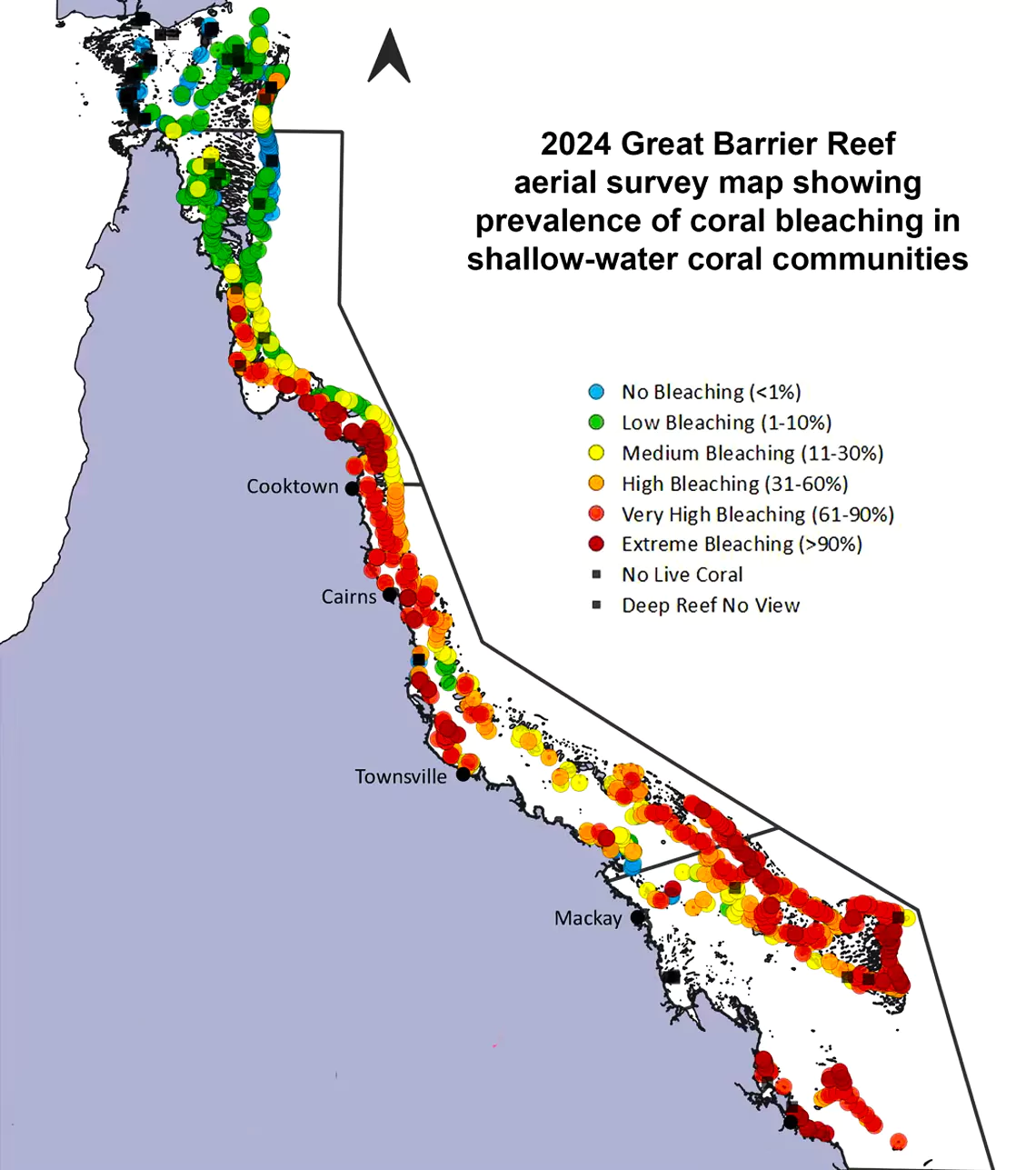A Study titled, ‘Highest ocean heat in four centuries places Great Barrier Reef in danger’ was recently published.

- Published in: It was published in the Journal Nature.
- Scientists at the Australian Institute of Marine Science have termed the ongoing mass bleaching event as the most widespread and extreme so far.
-
- The Ocean Temperatures SST at the reef are hottest in the past 407 years.
Key Findings of the Study
- The study finds that all the mass coral bleaching events recorded between 2016 and 2024 were driven by High Sea Surface Temperatures The Great Barrier Reef has experienced five mass bleaching events in the last decade alone.
- Anthropogenic factor: Climate model analysis confirms that human influence on the climate system is responsible for the rapid warming in recent decades
- Highest Recorded Temperatures: The SST recorded was 1.73 degrees Celsius above mean temperature in the ongoing mass coral bleaching event recorded between January-March 2024..
- Past instance:
- 2016: The mean temperature was 1.5 degrees Celsius above the pre-1900s
- 2017: The temperatures were 1.54 degrees higher.
- 2020: The recordings were at 1.53 degrees higher
Enroll now for UPSC Online Course
Great Barrier Reef
- About: The Great Barrier Reef (GBR) is the largest coral reef system globally,
- Situated In: In the Coral Sea off Queensland, Australia. Stretching over 2,300 km, it comprises approximately 3,000 individual reefs and 900 islands.
- World Heritage: The Great Barrier Reef (GBR) is also a habitat for endangered species like the dugong and the large green turtle. Designated as a UNESCO World Heritage site, it was added to the list in 1981.
- Marine Protected Area: A significant portion of the Great Barrier Reef is designated as a marine protected area, overseen by Australia’s Great Barrier Reef Marine Park Authority.
Severe Coral Bleaching In Lakshadweep |
- Samples Analysis: The scientists drilled the centuries-old corals from 22 locations and used stress bands in their skeletal structure to find evidence of mass coral bleaching during the pre-1980s and during the 1877-78 El Niño.
- The stress bands suggest that the coral bleaching did not occur during the 1800s and even most of the 1900s.
- Climate Modeling: The scientists reconstructed the record of temperatures starting from 1618 and compared them with the modern recordings of the ocean temperatures.
- The first modern evidence of the mass coral bleaching at the reef was observed in the 1980s, but the events were not widespread and less severe in nature
- The analysis suggests that as the oceans started to warm around the 19th century the bleaching event started to become more damaging for the reef. .
- Assured Destruction: It was concluded that even with the global warming limited to 1.5 degrees Celsius in accordance with the Paris Agreement 70-90 per cent of the corals on the reef existing today can be lost.
- Global warming above 2 °C would have disastrous consequences for coral ecosystems..
- Changes in the Reef Ecosystem: With the business as usual approach, corals of the future will possess a different community structure with far less diverse coral species leading to a simplification of the reef ecosystem and immeasurable negative impact on the diversity of marine life.
- Adaptation Strategy: There are limitations in the only practical conservation solutions for the reef ie. coral adaptation and acclimatisation strategies, with the model projections showing that the rates of adaptation are not matching the pace of global warming
- Thermal Stress Level: Different coral species have different thermal stress thresholds like The Acropora species are known to be quite sensitive to thermal stress, but species of the genus Porites are more resistant.
Check Out UPSC CSE Books From PW Store
![]() 10 Aug 2024
10 Aug 2024

